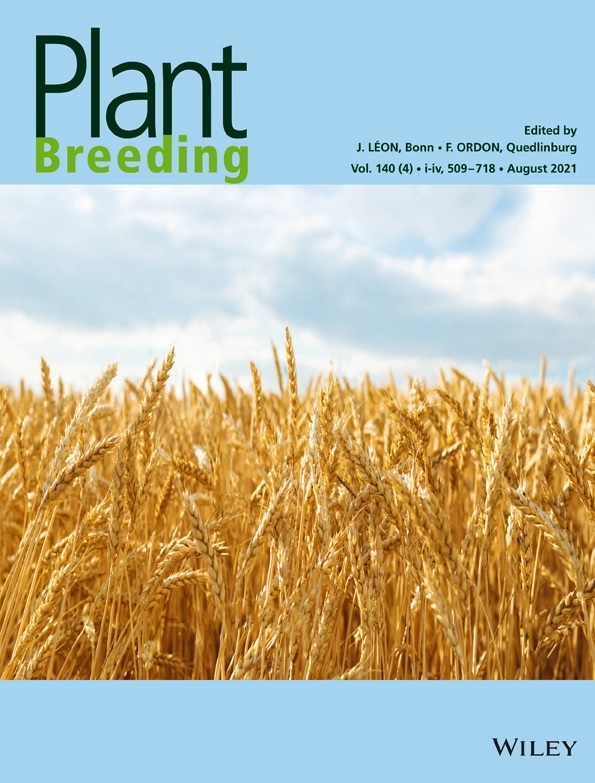Ver ítem
- xmlui.general.dspace_homeCentros Regionales y EEAsCentro Regional Buenos Aires SurEEA BalcarceArtículos científicosxmlui.ArtifactBrowser.ItemViewer.trail
- Inicio
- Centros Regionales y EEAs
- Centro Regional Buenos Aires Sur
- EEA Balcarce
- Artículos científicos
- Ver ítem
Increasing grain yield in bread wheat (Triticum aestivum) by selection for high spike fertility index
Resumen
Spike fertility index (SF) has been proposed as a promising selection criterion for increasing grain yield (GY) in bread wheat. Here, changes in GY and related traits after simulated selection (10% intensity) for high SF or high GY per se were assessed in two RIL populations: (I) Avalon/Glupro and (II) Baguette 10/Klein Chajá, and in (III) advanced lines from a breeding programme. Grain yield, SF, grain number per unit area (GN), grain weight (GW), test
[ver mas...]
Spike fertility index (SF) has been proposed as a promising selection criterion for increasing grain yield (GY) in bread wheat. Here, changes in GY and related traits after simulated selection (10% intensity) for high SF or high GY per se were assessed in two RIL populations: (I) Avalon/Glupro and (II) Baguette 10/Klein Chajá, and in (III) advanced lines from a breeding programme. Grain yield, SF, grain number per unit area (GN), grain weight (GW), test weight (TW) and grain protein content (GPC) were determined. Regardless of the environmental conditions, simulated selection for high SF always resulted in GN increases (between 1.6% and 27.4%). Average GY increase observed after selection for high SF (11.5%; N = 10; SEM = 5.8) did not differ (p = .92) from the average GY increase observed after selection for GY per se (11.8%; N = 10; SEM = 4.9). Grain weight, GPC and TW tended to decrease with selection for high SF; however, these trade-offs might be avoided by concurrent selection. Our findings validate the use of SF as a selection criterion for increasing grain yield in bread wheat.
[Cerrar]

Fuente
Plant Breeding 140 (4) : 575-584 (Agosto 2021)
Fecha
2021-06-28
Editorial
Wiley
ISSN
1439-0523
Documentos Relacionados
Formato
pdf
Tipo de documento
artículo
Proyectos
(ver más)
INTA/PNCYO-1127044/AR./-Desarrollo de germoplasma y cultivares comerciales de cereales de invierno
Palabras Claves
Derechos de acceso
Restringido
 Excepto donde se diga explicitamente, este item se publica bajo la siguiente descripción: Creative Commons Attribution-NonCommercial-ShareAlike 2.5 Unported (CC BY-NC-SA 2.5)
Excepto donde se diga explicitamente, este item se publica bajo la siguiente descripción: Creative Commons Attribution-NonCommercial-ShareAlike 2.5 Unported (CC BY-NC-SA 2.5)

